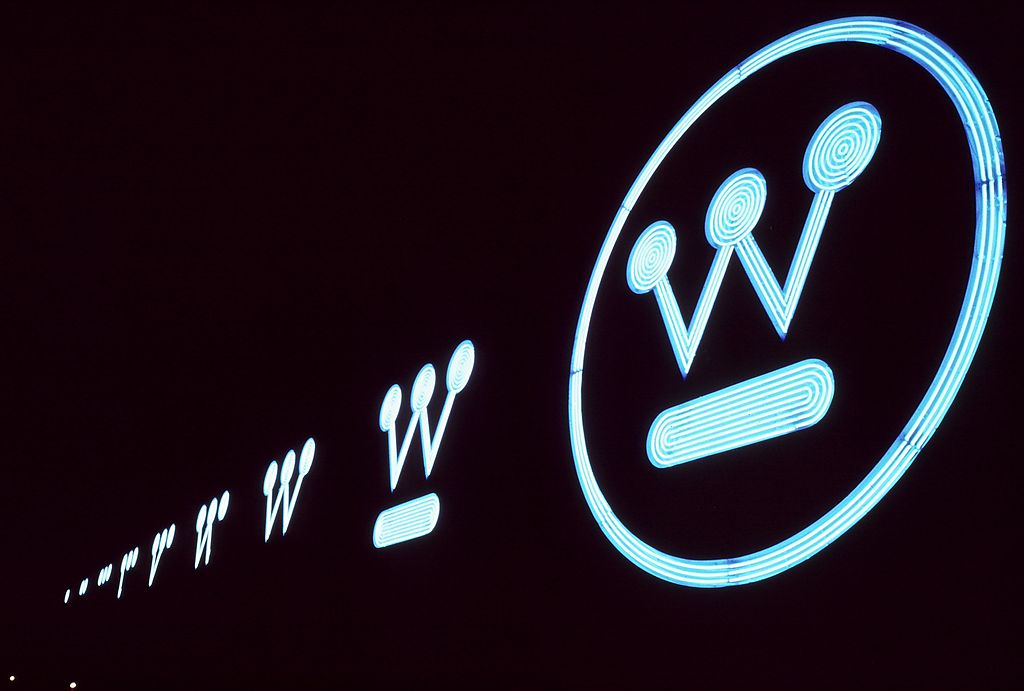Toshiba's losses related to its subsidiary Westinghouse Electric, which operates in the nuclear power industry, have reached nearly $ 7 billion. In December 2015, Westinghouse Electric bought Chicago Bridge & Iron's, among other things engaged in construction nuclear plants, for $ 229 million. The bankruptcy procedure will increase cash losses to about $ 9 billion, according to sources.
On March 31, Toshiba is planning to inform its creditors about filing an insolvency application with Westinghouse Electric in accordance with Chapter 11 of the US bankruptcy law, Reuters reports citing people familiar with the company's plans.
According to sources, Toshiba is now discussing with creditors further funding after filing for bankruptcy petition for Westinghouse. A representative of the corporation said it’s too early to comment on the situation, and the company's board of directors should take a decision on bankruptcy taking into account opinion of shareholders, including Toshiba itself, and creditors.
Toshiba’s creditor banks Sumitomo Mitsui Banking and Mizuho Bank fear that further delays in construction of reactors could lead to an increase in the losses of Toshiba's subsidiary, so they demand that the Japanese company carry out Westinghouse's bankruptcy procedure by the end of the month. Earlier in March, Toshiba asked the creditors whether the company’s syndicated loans would be prolonged. Timing for the decision was eventually postponed to April 11, when the company is due to submit reports for April-December 2016.
Previously, Toshiba announced an operating loss in April-December 2016 of 544.7 billion yen ($ 4.78 billion). The loss was due to impairment of assets. The company estimates that the net loss for the year ending March 31 will be 390 billion yen ($ 3.44 billion) against a loss of 460 billion yen a year earlier due to a scandal with accounting statements in 2015.
Thanks to Westinghouse’s bankruptcy, Toshiba can hedge additional losses. On Friday, March 24, Toshiba shares rose in price by 7.6% after the Singapore fund Effissimo announced that it became the largest shareholder of the Japanese company with a share of 8.14%.
According to Chapter 11, bankruptcy is an administrative process that allows the troubled company to reorganize and has the main goal of enabling the enterprise to start anew. The bankruptcy process under Chapter 11 of the US Code begins with the debtor submitting to the bankruptcy court applications in the prescribed form or petitions with payment of a relatively modest fee. At the same time, Chapter 11 of the United States requires no decision on the company's insolvency.
Once the bankruptcy case is opened, all actions that can be directed to enforcement or recovery upon demand to the debtor are suspended. This is the main means of protecting the debtor. The bankrupt company can continue normal activities provided that a reorganization plan is submitted, which must be approved by the court and the creditors' committee.
In general, the Chapter 11 bankruptcy could help Toshiba, but Westinghouse's debt of $ 6.3 will still stay. Most likely, Westinghouse will be sold without burdens.
source: reuters.com
On March 31, Toshiba is planning to inform its creditors about filing an insolvency application with Westinghouse Electric in accordance with Chapter 11 of the US bankruptcy law, Reuters reports citing people familiar with the company's plans.
According to sources, Toshiba is now discussing with creditors further funding after filing for bankruptcy petition for Westinghouse. A representative of the corporation said it’s too early to comment on the situation, and the company's board of directors should take a decision on bankruptcy taking into account opinion of shareholders, including Toshiba itself, and creditors.
Toshiba’s creditor banks Sumitomo Mitsui Banking and Mizuho Bank fear that further delays in construction of reactors could lead to an increase in the losses of Toshiba's subsidiary, so they demand that the Japanese company carry out Westinghouse's bankruptcy procedure by the end of the month. Earlier in March, Toshiba asked the creditors whether the company’s syndicated loans would be prolonged. Timing for the decision was eventually postponed to April 11, when the company is due to submit reports for April-December 2016.
Previously, Toshiba announced an operating loss in April-December 2016 of 544.7 billion yen ($ 4.78 billion). The loss was due to impairment of assets. The company estimates that the net loss for the year ending March 31 will be 390 billion yen ($ 3.44 billion) against a loss of 460 billion yen a year earlier due to a scandal with accounting statements in 2015.
Thanks to Westinghouse’s bankruptcy, Toshiba can hedge additional losses. On Friday, March 24, Toshiba shares rose in price by 7.6% after the Singapore fund Effissimo announced that it became the largest shareholder of the Japanese company with a share of 8.14%.
According to Chapter 11, bankruptcy is an administrative process that allows the troubled company to reorganize and has the main goal of enabling the enterprise to start anew. The bankruptcy process under Chapter 11 of the US Code begins with the debtor submitting to the bankruptcy court applications in the prescribed form or petitions with payment of a relatively modest fee. At the same time, Chapter 11 of the United States requires no decision on the company's insolvency.
Once the bankruptcy case is opened, all actions that can be directed to enforcement or recovery upon demand to the debtor are suspended. This is the main means of protecting the debtor. The bankrupt company can continue normal activities provided that a reorganization plan is submitted, which must be approved by the court and the creditors' committee.
In general, the Chapter 11 bankruptcy could help Toshiba, but Westinghouse's debt of $ 6.3 will still stay. Most likely, Westinghouse will be sold without burdens.
source: reuters.com





